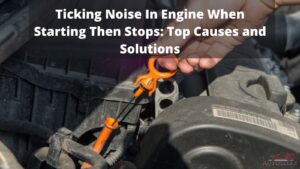The instrument cluster (also known as the dashboard or gauge cluster) in your car displays crucial data on the condition and operation of your vehicle. The instrument cluster is a set of dials, lights, and other displays that keep drivers safe and in charge on the road. However, instrument clusters can develop problems over time, like any other automotive component. If you notice any issues with your instrument cluster, get your instrument cluster repaired from Instrument Sales. In this detailed tutorial, we’ll talk about how to tell whether your instrument cluster needs servicing, how to diagnose the problem, what your options are, and why you should act quickly.
Table of Contents
Signs of Instrument Cluster Issues
Erratic or Inaccurate Readings
Inaccurate or unpredictable readings on the gauges are a common symptom of a faulty instrument cluster. Indicators like the speedometer, fuel gauge, and temperature gauge acting erratically could point to a more severe issue.
Stuck or Dead Gauges
The mechanism or sensor in one of the gauges is likely broken if it stays at a single reading or doesn’t respond.
Dim or Flickering Lights
If the instrument cluster’s indicator lights and backlighting are dim or flickering, it may indicate a wiring problem or malfunctioning internal circuitry.
Warning Light Malfunction
Warning lights that don’t come on at start-up or that don’t go off after the engine is started should always be looked into. Important warning lights include the check engine, anti-lock brake, and airbag lights.
Complete Blackout
If the complete instrument cluster does not light up when the car is turned on, it is clear that the cluster has to be repaired.
Diagnostic Process
The diagnostic procedure for instrument cluster problems requires a systematic strategy for isolating the source of the issue. Follow these techniques to efficiently diagnose and perhaps resolve instrument cluster problems, whether you’re a web developer with a penchant for problem-solving or a vehicle enthusiast trying to troubleshoot:
Visual Inspection
Start by taking a quick look at the dashboard. Inspect it for wear and tear, deterioration, or damage. Check the exterior of the cluster for damage, such as cracks, scratches, or other cosmetic flaws that could disrupt its operation.
Check Fuse
A blown fuse is often the source of problems with the instrument cluster. To find the fuse that powers the instrument cluster:
- Use the guide provided by the vehicle’s manufacturer.
- Check the fuse’s continuity with a multimeter.
- Replace the blown fuse with a new one of the same amperage and observe if the cluster still works.
Diagnostic Tools (OBD Scanner)
Modern vehicles’ onboard diagnostic (OBD) systems allow the instrument cluster to exchange data with other automobile parts. An OBD scanner can read error codes stored in the computer and provide insight into the nature of the problem. Follow the on-screen prompts to connect the scanner to the OBD port (in most vehicles, this is under the dashboard).
Sensor Testing
Sensor failure is a common cause of trouble in the instrument cluster. Make sure each of these sensors passes its tests to ensure precision. For instance, If your temperature gauge gives you false readings, you should check the sensor to ensure it’s working correctly.
Circuit Testing
If troubleshooting the issue with a visual inspection or error codes proves fruitless, you may need to check the instrument cluster’s connections and circuits. A multimeter ensures that the voltage and continuity across the cluster are correct.
Gauge Calibration
Recalibrating the gauges may fix the problem if they are giving false readings. The gauges on some vehicles can be readjusted by following the steps in the owner’s or service manual.
Wiring Inspection and Repair
Wiring problems might cause the gauges to read incorrectly or the entire cluster to stop working. Inspect the instrument cluster wire harness for wear, corrosion, or a lack of a secure connection. Replace or repair any frayed or corroded wires.
Cluster Replacement
If the instrument cluster can’t be fixed, consider getting a new one. This may be a pricey choice, but it may be necessary if the cluster’s inner workings are damaged beyond repair.
Professional Diagnosis
Consult a skilled mechanic or expert if you need help to solve the problem. They are equipped with advanced diagnostic equipment and the knowledge to fix the problem properly.
Remember that the diagnostic procedure may change based on your experience, the nature of the problem, and the tools at your disposal. To avoid missing any issues, be sure to record your progress, take notice of error codes, and work methodically. Disconnecting the vehicle’s battery and taking other safety measures are essential before working on any vehicle’s electrical system.
Potential Solutions
Cluster Replacement
Replacing the entire instrument cluster as the most efficient course of action may be necessary. It will likely be suggested if the cluster can’t be fixed or if this option will save money.
Gauge Calibration
Inaccurate readings could be corrected by recalibration of the instruments. The gauges must be calibrated such that they accurately reflect the situation.
Wiring Repair
Careful inspection and repair of damaged or corroded wires is required when addressing wiring concerns. This may take some time, but full functionality must be restored.
Sensor Replacement
If you want reliable results, replace broken sensors with new ones of the same or higher grade.
Importance of Prompt Repairs
Fixing faulty instrument clusters as soon as possible is essential for several reasons:
Safety
The vehicle’s status and potential dangers are shown via the car’s many warning lights. Driving safely is important, so please heed these warnings.
Vehicle Performance
The instrument cluster is crucial to keeping tabs on the vehicle’s performance and identifying any underlying technical issues.
Resale Value
The resale value of your car may drop if the instrument cluster doesn’t work correctly. Buyers may be hesitant to invest in a vehicle with a history of defects.
Wrapping Up
Drivers rely heavily on the information provided by the instrument cluster, which is an integral part of any vehicle. Safe and effective driving conditions can be maintained by detecting potential instrument cluster problems early, implementing a thorough diagnostic procedure, and resolving any resulting issues. Recalibration, sensor replacement, wiring repair, and cluster replacement are all possible choices for repairing a faulty instrument cluster, and all will help your automobile perform more smoothly and last longer. Remember that having a well-functioning instrument cluster is about more than convenience.
- Understanding the Leading Causes of Car Accidents in 2025 - November 18, 2025
- How to Spot a Great Deal on a Car for Sale in NSW - October 31, 2025
- How to Choose the Right Used Car Dealership in NSW - October 31, 2025

